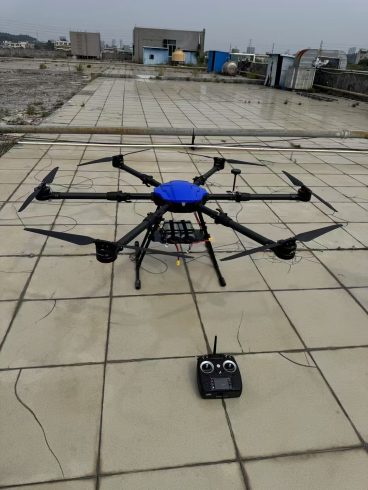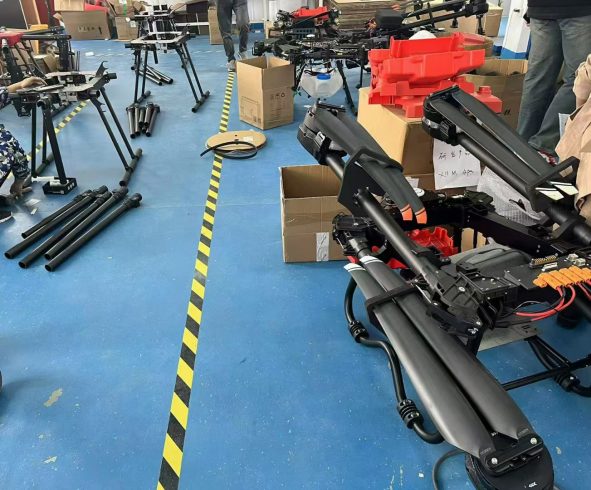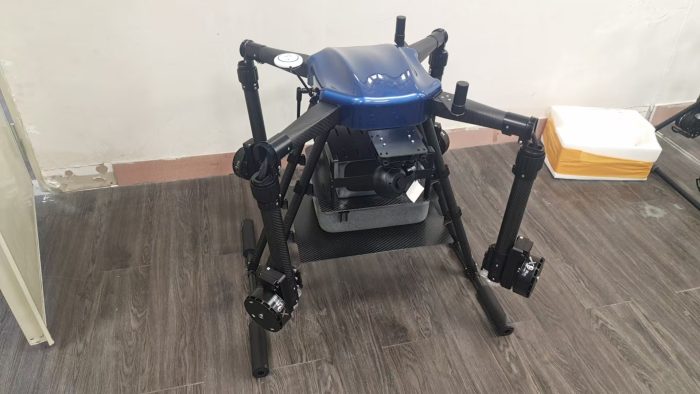![图片[1]-Drone Sprayers for Wheat Crops: Precision, Efficiency, and Sustainability for Global Food Security-msoen](https://www.msoen.com/wp-content/uploads/2025/04/3ea0601715184639-1024x768.jpg)
Discover how drone sprayers revolutionize wheat farming with targeted pesticide application, reduced chemical waste, and labor-saving automation. Learn key features, challenges, and best practices for optimizing wheat cultivation.
Introduction: The Critical Role of Wheat Farming and Its Challenges
Wheat, a staple crop for over 2.5 billion people globally, faces intensifying pressures from climate change, labor shortages, and rising input costs. Traditional spraying methods—manual backpacks, tractors, or aircraft—struggle with uneven terrain, dense canopies, and the risk of crop damage during critical growth stages. Drone sprayers for wheat crops offer a precision-driven solution, combining advanced technology with adaptability to large-scale, open-field farming. This article explores how drones enhance efficiency, reduce costs, and promote sustainability in wheat production.
- Why Wheat Fields Need Specialized Drone Sprayers
Wheat presents unique challenges:
- Vast, Open Fields: Large-scale farms require rapid, uniform coverage across acres of contiguous land.
- Dense Canopies: Tall, vertical stalks complicate pesticide penetration during stem elongation and flowering.
- Weather Sensitivity: Wheat is vulnerable to fungal diseases like Fusarium head blight, which thrive in humid conditions.
- Labor Constraints: Manual spraying is time-intensive and risky during critical growth phases.
Drones address these issues by delivering precise, low-drift applications while operating above dense canopies.
- Key Advantages of Drone Sprayers for Wheat A. Precision Spraying in Dense Canopies
- Multi-Layer Coverage: Drones adjust altitude (3–8 meters) to spray beneath upper leaves and target pests like rust fungi or aphids.
- Directed Nozzles: Swirl nozzles ensure chemicals penetrate thick foliage without over-saturating stalks. B. Reduced Chemical Waste and Environmental Impact
- AI-Driven Spot Spraying: Multispectral sensors detect pest hotspots, reducing pesticide use by 30–50%.
- Low-Drift Technology: Shielded spray systems minimize airborne particles, protecting nearby ecosystems. C. Time and Cost Efficiency
- 24/7 Operation: Autonomous drones work overnight to avoid heat stress on workers and volatile chemical reactions.
- Lower Fuel Costs: Drones consume 80% less energy than tractors, ideal for expansive wheat belts. D. Health and Safety Benefits
- Reduced Worker Exposure: Eliminates manual handling of toxic chemicals like triadimefon or chlorothalonil.
- Avoid Crop Damage: Prevents physical contact with stalks, ensuring optimal grain quality at harvest.
- Essential Features for Wheat-Specific Drone Sprayers A. Rugged Design for Harsh Conditions
- Weatherproofing: IP67-rated drones withstand dust, rain, and high humidity during wet seasons.
- High-Payload Tanks: 30–50L capacity for extended missions in vast wheat fields. B. Advanced Spraying Systems
- Turbo Nozzles: Prevent clogging from wheat chaff and dust.
- Variable Rate Control: Adjust flow rates based on crop density and growth stage (e.g., tillering vs. flowering). C. Smart Navigation Tools
- RTK GPS: Centimeter-level accuracy for repeatable flight paths in uniform rows.
- Obstacle Avoidance: LiDAR sensors detect tractors, irrigation pivots, or overhead power lines.
- Applications Across the Wheat Growth Cycle
- Seedling Stage: Fungicide applications to prevent stripe rust and powdery mildew.
- Stem Elongation (Jointing): Target aphids and Hessian flies with systemic insecticides.
- Flowering (Anthesis): Precision fungicide sprays to combat Fusarium head blight.
- Pre-Harvest Desiccation: Fast-acting herbicides to accelerate drydown for timely harvesting.
- Overcoming Challenges in Wheat Spraying A. Managing Canopy Penetration
- Altitude Adjustments: Increase flight height during peak biomass growth to avoid damaging stalks.
- Swath Width Optimization: Wider swaths for dense fields, narrower for newly planted areas. B. Weather Sensitivity
- Humidity Management: Schedule flights during cooler mornings to reduce evaporation.
- Wind Speed Monitoring: Halt operations if winds exceed 10 mph to prevent drift onto neighboring crops. C. Maintenance and Compliance
- Post-Flight Cleaning: Rinse nozzles and tanks to prevent chemical buildup, especially after using triadimenol.
- Regulatory Compliance: Adhere to local UAV laws (e.g., FAA Part 107 in the U.S., EASA in Europe).
- Future Innovations in Wheat Drone Spraying
- AI-Powered Predictive Analytics: Early disease detection using historical weather and crop data.
- Swarm Drones: Coordinated fleets for simultaneous spraying and yield monitoring in mega-farms.
- Robotic Integration: Drones paired with autonomous combine harvesters for end-to-end automation.
Conclusion: Elevate Wheat Yields with Smart Drone Solutions
Drones are indispensable for modern wheat farming, offering precision, efficiency, and sustainability in an era of climate volatility and population growth. By combining advanced spraying technology with smart data analytics, farmers can protect yields, reduce costs, and contribute to global food security.
Call to Action:
Ready to transform your wheat farming? Explore our AI-driven agricultural drones engineered for cereal crops. Contact us today to learn how technology can elevate your farm’s productivity!












暂无评论内容